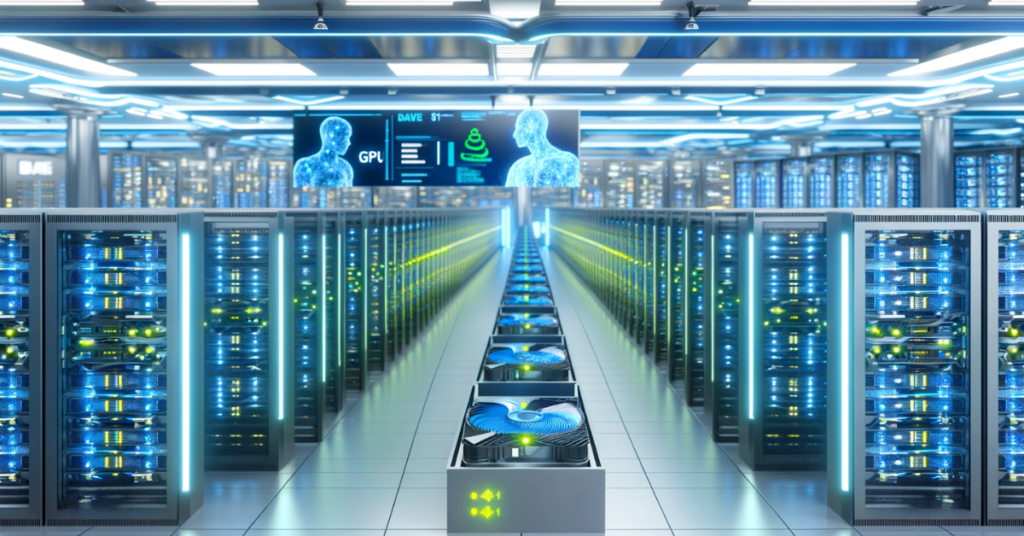They form a critical aspect of today’s infrastructure essential for cloud computing, Artificial Intelligence among other uses; however, their continuously increasing consumption adds to the world’s electricity use currently at about 1%. As this demand escalates, energy efficiency needs enhancement. AI has a way of dealing with a load balance which makes the work to flow efficiently in the system in such a way that it will consume less energy. This technology enables data centers to better control resources and minimize energy use—a key priority in recent years, given the growth of global digital assets .
Understanding Load Balancing in Data Centers
Load balancing, as the name suggests, is the act or practice of evenly distributing the load through the number of different, and possibly connected, servers, so that none of them gets bogged down under the work load, and consequently a server crashes taking along with it. In the past load balancing employs unidirectional algorithms including round robing or least connections that are predefined algorithms. While these methods are useful, they do not address the reactive and variable character of today’s workloads, and energy demand in data centers.
The Role of AI in Load Balancing
Load balancing is not a new concept; however, the integration of artificial intelligence (AI) adds a completely new layer of flexibility and accurate control over the process. By leveraging machine learning algorithms and real-time analytics, AI-driven load balancing systems can:
- Predict Workloads: It also employs the AI models to integrate the past data and current real-time data to generate traffic patterns for appropriate resources allocation in advance.
- Optimize Resource Utilization: AI self-proactively manages resources continuously working to optimize server utilization away from the extremes.
- Minimize Energy Consumption: Scheduling is another smart technology with AI performing automated discovery of less utilized servers and distributing the workloads so that such servers can power down momentarily or switch to low power mode.
- Improve Fault Tolerance: It identifies threats and, in turn, redistributes traffic to thereby minimize the chances of failure within the system.
Energy Efficiency Through AI-Driven Load Balancing
AI integration in load distribution has impacts not only in performance but also in energy saving. Here’s how:
- Dynamic Server Scaling: Smart systems using AI facilitate a dynamic configuration strategy of renting out servers based on a company’s workload requirements. During low-traffic periods it is possible to shut down unneeded servers thus avoiding wasteful use of power.
- Thermal Management: AI also continuously observes temperatures in data centres and anticipates peaks in temperature in relation to processing work to avoid over-heating hence the need for extra cooling.
- Renewable Energy Integration: AI systems can help to direct the load to those servers that are driven by renewable energy sources minimizing the carbon cost of data centers.
- Enhanced Virtualization: When proper placement of virtual machines is determined by an AI, on average the data center requires fewer physical hosts to handle the same workload, very chocking power consumption.
Case Studies and Real-World Applications
Several leading technology companies and research institutions are already leveraging AI-driven load balancing to improve energy efficiency:
- Google: Google’s DeepMind AI has been used to optimize cooling in its data centers, achieving energy savings of up to 40% in cooling systems.
- Microsoft: Microsoft employs AI to manage energy consumption across its Azure cloud data centers, integrating predictive analytics and renewable energy sources.
- Alibaba Cloud: Alibaba uses AI algorithms to dynamically allocate resources, reducing server idle time and achieving higher energy efficiency.
Challenges and Considerations
Despite its advantages, AI-driven load balancing is not without challenges
- Implementation Costs: The use of AI systems entails extensive acquisition of software, hardware and other infrastructural and technical support.
- Data Privacy: Due to the enormous quantity of data on which AI employs for training, and enlists for making determinations, there are issues of data protection.
- Complexity: Most of the time AI is integrated into pre-existing systems, which calls for compatibility and sound structures.
- Ethical Concerns: Decision-making by and for AI sparks transparency and accountability’s issues.
The Future of AI in Data Centers
Future advances in artificial intelligence technology mean that the function of AI in optimising the data center will likely increase in the future. Future advancements could include:
- Autonomous Data Centers: Facilities in which fully automated scheduling and control occur, with AI in control of schedules and maintenance.
- Edge Computing Integration: The fourth one is an AI-based load balancing for the edge data centers to allow energy consumption through the closer processing to user end.
- Enhanced AI Algorithms: Even more advanced AI, which will be able to learn from even more variables and workloads, more specific to workload patterns, and with better predictors of the tuning environment.
Conclusion
Automated load balancing is the key enabler of intelligently designed energy efficient data centers of the future. AI can provide efficiency in workload balanced in workloads resource optimization and energy conservation not only to meet the continually increasing demands of digital infrastructures but also for creating a sustainable future. This means that as organisations increasingly bring focus to the issue of environmentalism, integration of AI solutions will be paramount to achieving optimal performance alongside optimised sustainability policies in the data centre market space.
